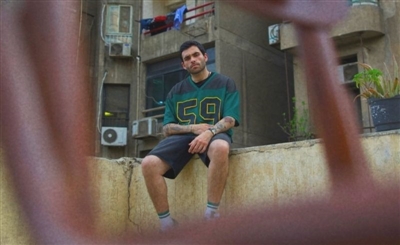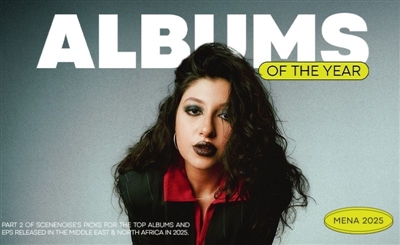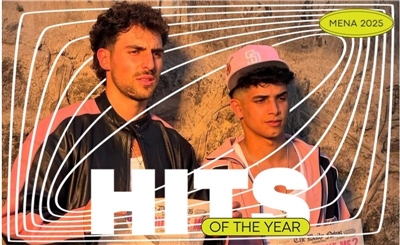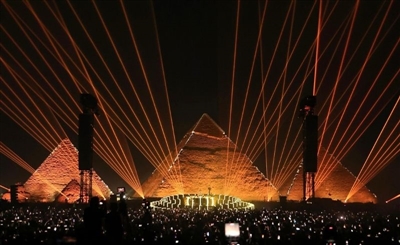Palestine: Inside Al Gharib's Epic 35-Track Anti-Annexation Album
SceneNoise speaks to the team behind an album whose proceeds from the campaign will be distributed to Olive Kids, an organisation dedicated to improving the lives of Palestinian children.
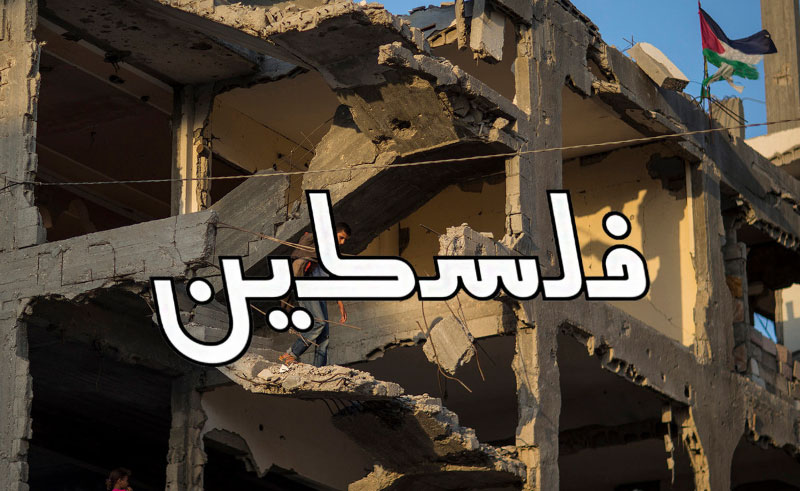
On the eve of the 45th Palestinian Land Day, Al Gharib announced the release of their Palestine compilation in an act of solidarity with the Palestinian people in the face of the systematic dispossession of their land at the hands of the Israeli settlements. The album features 35 tracks from 35 different artists parceled into three different CD’s dedicated to reiterating the imperative and indispensable message of resistance. Al Gharib are steadfast in their mission to continue to raise awareness of Israel’s incessant annexation of Palestinian land.
The band dedicated to presenting themselves as a barricade in the face of oppression in the Middle East have also announced that all the proceeds from the Palestine campaign will be distributed to Olive Kids, an Australian registered volunteer-only organisation dedicated to improving the lives of Palestinian children in Palestine and in refugee camps.
With a message so abundantly and obstinately loud and a line-up entrenched in themes of youth, resistance, and subculture, we couldn’t help but reach out to the enigmatic Al Gharib team.
The Middle East boasts such a variety of rich artists committed to their identity as regional producers of art and a pretty overflowing ecosystem of subcultures who sound different and probably have different things to say. How did you manage to finally decide on the artists on the line up?
The final line-up of our compilation resembles a collection of artists who we deeply admire as some of our favourite producers and DJ’s at the moment. After sharing insight about the release with the artists we were interested in, we were delighted to receive an overwhelming response of solidarity with the Palestinian cause as artists were eager to contribute their production to the compilation. There were a collection of artists and friends on the line-up who we already knew had shared our perspective on Israel’s formal declaration to further annex private Palestinian land in May last year. With an overflowing ecosystem of music, we aimed to curate an inclusive, high caliber line-up, rich with quality to advance the necessity of raising awareness towards the illegal annexation of Palestinian Land. We felt that curating a compilation with a wide variety of styles, consisting of artists from all around the world, demonstrated how extensive support against the annexation was and should be.
As a group, you’ve made it clear that you stand radically in the face of oppression, specifically where it concerns the exploitation of the Middle East and the systematic dispossession its people face; LE BEIRUT has allowed you to extend profits to nurture LGBTQ+ civil society in Lebanon and you’ve also been keen on raising awareness for things like UNSC Resolution 2254 with Project 2254. However, your latest work is different -- every track in the lineup is different, yet they all have one overarching theme/message. How different was working on that from working on things you’ve done before?
Originally after the declaration of annexation last year, we began developing the Palestine compilation but after the devastating explosion in Beirut, we switched our focus to putting together the compilation LE BEIRUT to generate emergency funds to be distributed to selected organizations in Lebanon. The compilations LE BEIRUT and Palestine are very different in nature. The previous compilation was an art fund seeking to advance relief to victims of the explosion and minority groups in Beirut as an isolated incident, where the Palestine compilation is a project seeking to raise awareness towards an internationally condemned act of annexation, in violation of international law - something that has been ongoing for the better half of the past century. The concept of Palestinian trauma is often contested because of a failure to acknowledge and reconcile past Palestinian suffering, particular guises and narratives used to justify the occupation as well as Palestinians being regularly manipulated in the media to an effect that grossly misrepresents them and minimizes their suffering. Putting together a compilation for a people whose suffering is contested faces a number of challenges.
Brian Eno recently wrote an article about artists being censored in Germany for their support of Palestinian human rights. Unlike the Beirut release, we received backlash for our Palestine release. Despite the overwhelming support and expressions of solidarity, futile accusations of anti-Semitism and smear campaigns led to some expressing a boycott of the release and to artists involved with agencies of the some of the artists receiving messages condemning their appearance on the release. Distributing funds to Palestine is also a much more extensive and exhausting process than directing funds to Beirut. Many online platforms are also reluctant to promote or share a release that they believe is ‘contentious’ in nature. The very fact that the topic of annexation could be regarded as contentious displays the systematic obstacles in place that distort and contest Palestinian suffering, reinforcing the differences we experienced developing this compilations to the last.
Carrying on from that, getting so many different artists and producers with, at times, strikingly different sounds to sound cohesive and fuse together must have been difficult - What was the process of working on such a labor of love like? How did the presence of one axial theme/message that the artists orbited around alter or even build upon that process?
Despite being very familiar with the production of the artists involved, you can never really know what the artists may contribute until the music is received. There are multiple stages to the musical curation process. The first is the selection of artists for the release, the second process is trying to make sense of the contributions and assembling them in an order that we believed was harmonious with the nature of the release - an order in which the 35 tracks should be listened to consecutively. The final process is arranging the music into 3 separate CD’s. This process is very different to selecting tracks from 1-35. Listening to the CD’s requires a different frame of mind to curating the tracks in a chronological order.
CD 1 & CD 2 tend to be the more difficult CD's to assemble. CD 3 which is techno based was arranged in an order as if it were being played in a DJ set. CD 1 - CD 2 reflects tracks with varying BPM’s and styles which made it more difficult to order. The final order of CD's 1-2 embody a chain of emotions preceding one another, often unpredictable and asymmetrical, formulated less by thought and more by feeling. We re-licensed the late, great Bryn Jones (Muslimgauze) whose extensive discography encountered connection to the Palestinian, Arab and Muslim world contexts. We believed that it was fitting to have Muslimgauze’s track ‘State of Palestine’ feature as track one. We felt that musically, other songs on the release suited track one however, the significance of Muslimgauze, his work and his influence on us as a label, compelled us to pay tribute to such an icon.
You have been in contact with UNRWA for footage for some of the tracks. How did it feel, as music makers deep within alternative subculture, to be working in tandem with international organisations to emphasise such an imperative message?
Al Gahrib have been long time supporters of the work that UNRWA engages in. We sought to produce a release with hybridity that explored an audio-visual experience from an archive rich in footage that displays Palestinian people, landscape and culture in a form that we had felt been removed from their portrayl in Western Media. It is an absolute honour to work in tandem with international organisations such as UNRWA and non-government organisations like Olive kids and Proud Lebanon. Working with trusted institutions strengthens the credibility of the projects we are seeking to create and maximize our potential to raise awareness.
Finally, you worked on the compilation for eight whole months. Think back to the first time you listened through the entire finished line up. How would you describe what that was like? What was hearing 35 different and distinctive artists' sounds speak the same language like?
Eight months ago we had a white board filled with names of producers and visual artists and 8 months later we have a three-disc CD with beautiful photographs in our hands with a line-up that displays a great majority of what appeared on that same white board. It is very difficult to describe how that transformation felt. Listening to a diverse compilation of some of our favourite artists, knowing that all profits raised from this project will be directed towards orphans in Gaza inspired a sensation beyond thought.
You can purchase the compilation digitally on Al Gharib’s Bandcamp.
- Previous Article test list 1 noise 2024-03-13
- Next Article Ahmed Saleh & Holland’s Konstantyn Napolov Team Up for New Album
Trending This Month
-
Dec 24, 2025
-
Dec 23, 2025



